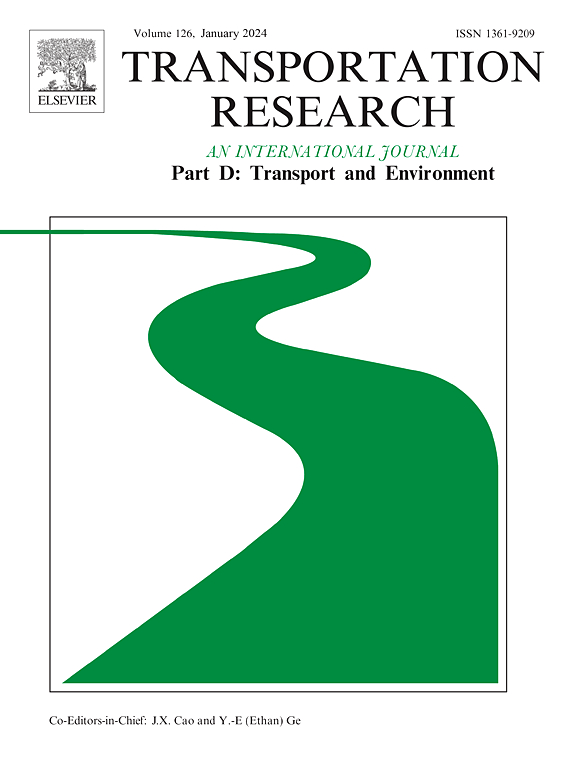Geography of E-shopping: distinctions among grocery, prepared meals, and non-grocery products
IF 7.7
1区 工程技术
Q1 ENVIRONMENTAL STUDIES
Transportation Research Part D-transport and Environment
Pub Date : 2025-09-24
DOI:10.1016/j.trd.2025.104969
引用次数: 0
Abstract
This study evaluates how the physical environment can shape e-shopping demand, specifically differentiating between non-perishable (non-grocery) and perishable (grocery and prepared food) products. We utilized revealed preference post-COVID one-week travel diary data with objectively assessed neighborhood-scale built environment characteristics. Results from a multivariate ordered probit model show that e-shopping for non-grocery, prepared food, and grocery items exhibited synergistic relationships. Notably, associations of urban form with e-shopping varied by product type. Residents of more walkable neighborhoods tended to shop online more frequently for prepared meals, but significantly less for non-grocery and grocery items. Simulated treatment effects highlighted a digital and geographic divide, and that a one-size-fits-all approach that ignores variations in urban form associations by product type can lead to unintended consequences. Results provide insights into how built environment interventions can manage e-shopping demand in the post-COVID era. We discuss implications of our findings for scenario planning and travel demand management.
电子购物的地理:杂货、熟食和非杂货产品的区别
本研究评估了物理环境如何影响电子购物需求,特别是区分非易腐(非杂货)和易腐(杂货和预制食品)产品。我们利用揭示的偏好在covid后一周的旅行日记数据和客观评估的社区尺度建筑环境特征。多元有序概率模型的结果表明,非杂货、预制食品和杂货项目的电子购物表现出协同关系。值得注意的是,城市形态与电子购物的关联因产品类型而异。更适合步行的社区的居民倾向于更频繁地在网上购买熟食,但购买非杂货和杂货商品的频率要低得多。模拟处理效果突出了数字和地理上的差异,一刀切的方法忽视了产品类型对城市形态关联的变化,可能会导致意想不到的后果。研究结果为了解建筑环境干预措施如何在后covid时代管理电子购物需求提供了见解。我们讨论了我们的发现对情景规划和旅行需求管理的影响。
本文章由计算机程序翻译,如有差异,请以英文原文为准。
求助全文
约1分钟内获得全文
求助全文
来源期刊
CiteScore
14.40
自引率
9.20%
发文量
314
审稿时长
39 days
期刊介绍:
Transportation Research Part D: Transport and Environment focuses on original research exploring the environmental impacts of transportation, policy responses to these impacts, and their implications for transportation system design, planning, and management. The journal comprehensively covers the interaction between transportation and the environment, ranging from local effects on specific geographical areas to global implications such as natural resource depletion and atmospheric pollution.
We welcome research papers across all transportation modes, including maritime, air, and land transportation, assessing their environmental impacts broadly. Papers addressing both mobile aspects and transportation infrastructure are considered. The journal prioritizes empirical findings and policy responses of regulatory, planning, technical, or fiscal nature. Articles are policy-driven, accessible, and applicable to readers from diverse disciplines, emphasizing relevance and practicality. We encourage interdisciplinary submissions and welcome contributions from economically developing and advanced countries alike, reflecting our international orientation.

 求助内容:
求助内容: 应助结果提醒方式:
应助结果提醒方式:


